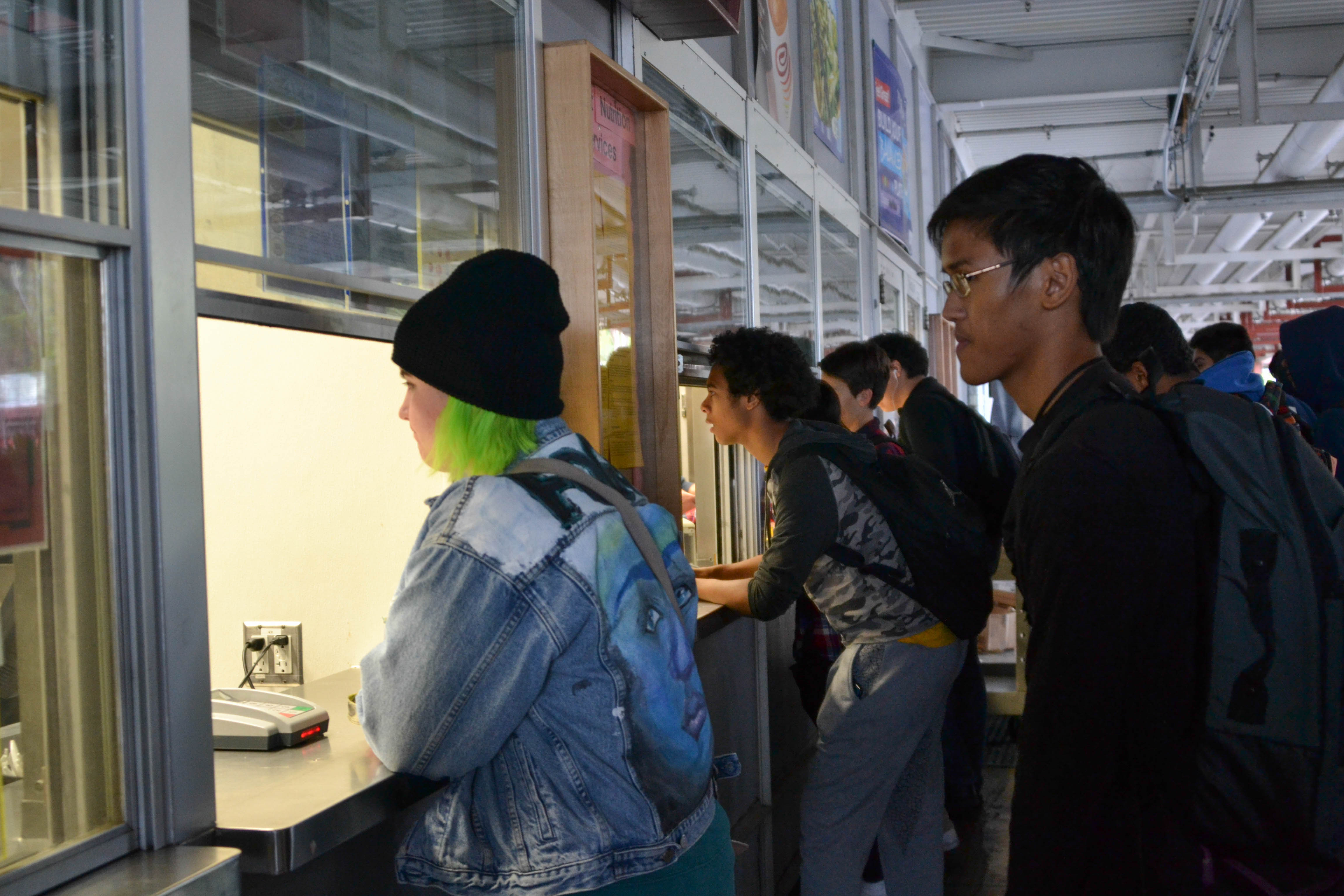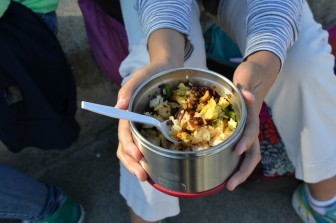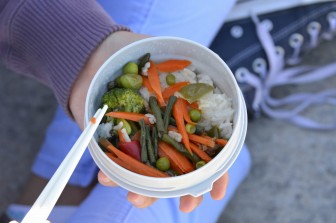
Just as the lunch bell rings, many Aragon students rush from their classes to Center Court, trying to get to the food carts and windows before lines begin to form. With choices ranging from smoothies to hamburgers, the school caters to about 450 Aragon students every day. However, other students tend to bring their own lunches to school every day. At Aragon, culture, taste, and convenience play a role in the decision to buy food or make lunch at home.
Buying food from the lunch line can be more efficient. Junior Addam Saky says, “Pretty much every day since I was a freshman, I’ve bought my lunch from Aragon … Their food isn’t too bad and it saves a lot of time to just buy your lunch at school instead of actually using time to make something at home,” he says.
Aragon’s lunch provider, Cross Roads Café, serves many students on a daily basis and tries to uphold their motto, “Fresh, Delicious, and Nutritious.” School lunch cafeteria leader Amelia Rivera says, “Our most popular food items are the chicken burgers and the nachos.”

While some may question what goes into the school food, all items have been approved by the school and the government. “Everything we serve is absolutely healthy. Our recipes follows the USDA requirements to contain only a certain amount of calories that we cannot go over,” Rivera says. Over the years, certain types of food have been removed, most notably Hot Pockets, because they did not meet these requirements.
This year, the price of school lunch entree items increased from $4 to $4.50. Rivera says, “The pricing is contingent on the labor and food cost that goes into making the actual product, which is approved by the company’s board.” Despite the price hike, the popularity of school lunch hasn’t wavered, as demonstrated by the crowded and seemingly endless lunch lines.
Conversely, other students prefer to bring their own lunch from home. For some students, it is a matter of taste. Sophomore Ryan Phung says, “I personally don’t like the taste of [school] lunch because it’s too bland. I know over the years they’ve been trying to make the food healthier, but ultimately it’s about the quality of how the food tastes.” In addition, pricing can be an important factor in deciding what to eat. “The food they serve isn’t that cheap either. For $5 you can just go to McDonalds and buy like five McChickens instead of just one burger from the lunch line,” says Phung.
For junior Arnav Bhavsar, culture and religion play an important role in choosing what foods to eat. “I don’t eat beef or pork because of my family’s culture and religion, and I don’t eat other meats like turkey because of tradition,” says Bhavsar. Bhavsar’s family practices Hinduism, where animals, especially cows, are held to be sacred. “Occasionally, I will eat chicken or fish, but generally I eat vegetarian foods like sandwiches for lunch,” says Bhavsar. “Vegetarian foods are also a lot healthier than meat-based foods, and are also better quality in my opinion,” he says. Aragon’s lunch service does provide vegetarian accommodations, but Bhavsar’s family also doesn’t eat genetically modified organisms, so Bhavsar does not buy from the lunch line. “My mother always packs lunch for me, and my dad would be against eating food from school because of the fact that it might not be organic,” says Bhavsar.
For some teachers, versatility is an important factor in choosing lunch options. History teacher Amanda Klein says, “I generally eat leftovers from whatever I made or got to eat in the past couple of nights … Convenience is the biggest factor. I don’t usually have time to make a lunch in the morning or go shopping for particular things.” In addition, because students get extra help from teachers during lunch, teachers are strained for time when it comes to getting the chance to eat. “Sometimes I’m in the classroom helping students, or if students need to make up a test or meet with me about a project, I’ll stay and work with them during lunch,” says Klein.

In regards to Aragon’s lunch service, Culinary Arts and Foods and Nutrition teacher Susan Hontalas believes it is improving. “The food is better than it used to be because it’s less unprocessed and it isn’t packaged food,” she says.
In an academic setting where students are constantly busy with work, we often compromise our own eating preferences for the sake of convenience. Whether students bring lunch from home, or buy it at school, food is an essential part of our daily lives.




